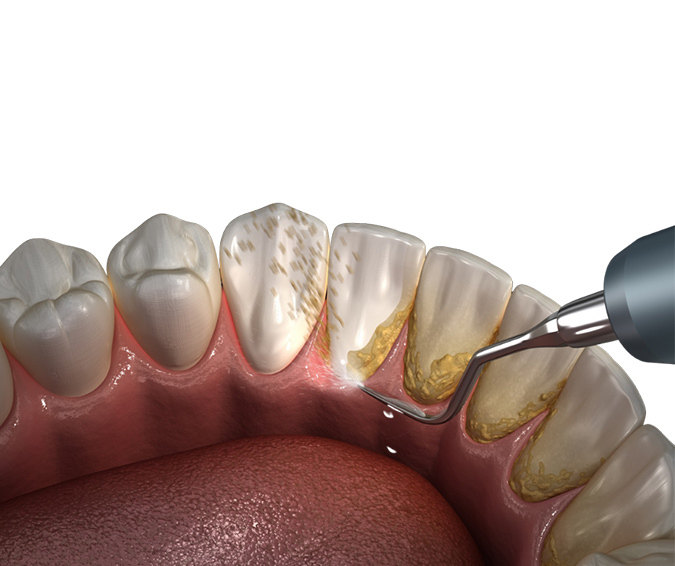The Link Between Dental Plaque and Gum Disease: What You Should Know
Introduction
Dental plaque and gum disease are two common oral health issues that affect millions of people worldwide. Understanding the link between these two conditions is crucial for maintaining good oral hygiene and preventing more serious dental problems. In this blog post, we will explore the connection between dental plaque and gum disease, and provide you with important information to help you take better care of your teeth and gums.
Understanding Dental Plaque

Dental plaque is a sticky, colorless film that forms on the teeth and gumline. It is primarily composed of bacteria, food particles, and saliva. If not removed through proper oral hygiene practices, plaque can harden into tartar, leading to various dental problems.
What Causes Dental Plaque?
The main cause of dental plaque is poor oral hygiene. When you don’t brush and floss regularly, plaque accumulates on the teeth. Additionally, consuming sugary and starchy foods can contribute to plaque formation as bacteria in the mouth feed on these substances.
The Connection to Gum Disease
Gum disease, also known as periodontal disease, occurs when the bacteria in plaque infect and inflame the gums. The early stage of gum disease is called gingivitis, which is characterized by red, swollen, and bleeding gums. If left untreated, gingivitis can progress to periodontitis, a more severe form of gum disease that can lead to tooth loss.
How Plaque Leads to Gum Disease
When plaque is not removed, it releases toxins that irritate the gums, causing inflammation. Over time, this inflammation can damage the gum tissue and the bone supporting the teeth. As the disease progresses, the gums may recede, creating pockets between the teeth and gums where more plaque can accumulate.
Signs and Symptoms of Gum Disease
It’s important to be aware of the signs and symptoms of gum disease, which include:
- Bleeding gums during brushing or flossing
- Swollen, tender, or red gums
- Receding gums
- Persistent bad breath
- Pus between the teeth and gums
- Loose or shifting teeth
Preventing Dental Plaque and Gum Disease
Prevention is key when it comes to dental plaque and gum disease. Here are some tips to maintain a healthy mouth:
- Brush your teeth at least twice a day.
Summary
Dental plaque is a sticky film that forms on the teeth and contains bacteria. When plaque is not properly removed through regular brushing and flossing, it can harden into tartar, leading to gum inflammation and eventually gum disease. Gum disease, also known as periodontal disease, is a serious infection that affects the tissues surrounding the teeth, including the gums and bone. If left untreated, gum disease can result in tooth loss and other complications.
Preventing dental plaque buildup is key to avoiding gum disease. Regular brushing and flossing, along with routine dental check-ups and professional cleanings, can help remove plaque and tartar, reducing the risk of gum disease. Additionally, maintaining a healthy diet and avoiding tobacco products can contribute to better oral health.
By understanding the link between dental plaque and gum disease, you can take proactive steps to protect your oral health. Stay tuned for our upcoming blog posts, where we will click to read delve deeper into the causes, symptoms, and treatment options for gum disease, as well as provide practical tips for maintaining a healthy smile.
- Q: What is dental plaque?
- A: Dental plaque is a sticky, colorless film of bacteria that constantly forms on our teeth. It is the main cause of gum disease.
- Q: What is gum disease?
- A: Gum disease, also known as periodontal disease, is an infection of the tissues that surround and support the teeth. It is caused by the buildup of dental plaque.
- Q: How does dental plaque lead to gum disease?
- A: When dental plaque is not removed through proper oral hygiene practices, the bacteria in the plaque release toxins that irritate the gums, leading to inflammation and infection.
- Q: What are the symptoms of gum disease?
- A: Symptoms of gum disease include red, swollen or tender gums, bleeding gums, persistent bad breath, receding gums, and loose or shifting teeth.
- Q: How can I prevent gum disease?
- A: To prevent gum disease, it is important to maintain good oral hygiene by brushing your teeth twice a day, flossing daily, and visiting your dentist regularly for professional cleanings.
- Q: Can gum disease be treated?
- A: Yes, gum disease can be treated. The treatment options depend on the severity of the disease and may include deep cleaning procedures, medication, or in advanced cases, surgery.
- Q: Are there any risk factors for gum disease?
- A: Yes, certain factors increase the risk of developing gum disease, such as poor oral hygiene, smoking, diabetes, hormonal changes in women, certain medications, and genetic predisposition.
- Q: Is gum disease contagious?
- A: No, gum disease is not contagious. However, the bacteria that cause gum disease can be spread through saliva, so it is important to practice good oral hygiene and avoid sharing toothbrushes or utensils.

Welcome to my website! My name is Ryan Sullivan, and I am a dedicated and experienced dental assistant. With a passion for oral health and a commitment to providing exceptional patient care, I am thrilled to share my knowledge and expertise with you.
